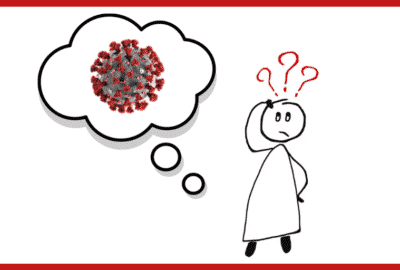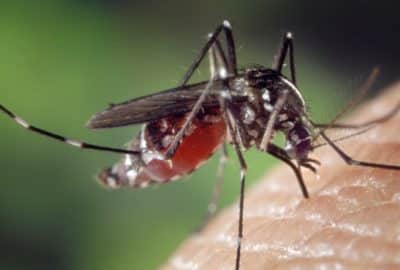When did dogs become our best friends?
Wednesday 17th Feb 2021, 11.27am
In this year’s Valentine’s episode, we’re exploring that most special of relationships. That’s right – the one between us and our dogs! We often hear pooches described as “(wo)man’s best friend”, but for how long has this been the case? Join Prof Greger Larson, an expert in palaeogenomics and bio-archaeology, as we journey back thousands of years to explore the possible origins of this remarkable inter-species bond.
Emily Elias: (Dog barks) Meet Wolfie. He’s the newest member of the Oxford Sparks family. He’s a rescue greyhound, and he’s adorable, but right now, he’s getting used to his humans so that they can become good buddies. And that got us thinking.
On this episode of the Oxford Sparks ‘Big Questions’ podcast, we are looking at the relationship between people and dogs. And we’re asking, when did dogs become our best friends?
Hello, I’m Emily Elias, and this is the show where we seek out the brightest minds at the University of Oxford, and we ask them the big questions. And for this one, we’ve reached a researcher who spends his days digging into the truth about dogs.
Greger Larsen: Yes, hi. I’m Greger Larson, I’m a Professor of Evolutionary Genomics in the School of Archaeology at Oxford University.
Emily: So, are you a cat person?
Greger: (Laughter) Funny. I’ve had both, I’ve had dogs, I’ve had cats. I study dogs, I study cats, I’m kind of an equal opportunity, domestic animal, pet guy.
Emily: First of all, do you mind maybe just putting on your dog hat for a few minutes?
Greger: Sounds great. Absolutely.
Emily: Okay, so If you’ve been at your local dog park, and you’ve seen a dog owner call over their pup, you can tell there is like, a really clear bond there. So, what qualities is it exactly that make humans and dogs really good friends?
Greger: I think there is a mutual attraction there. I think dogs and humans are both very plastic in their behavioural responses. We are both, kind of, predators in a way. We’re, sort of, carnivores as well. We just have a lot of mutual appreciation, respect, and we can understand each other, despite the fact that we don’t speak the same language. But we have ways of communicating through bodily and facial cues that are mutually intelligible. And that forms a, kind of-, it’s maybe a good thing we can’t talk to each other. Because we feel like we’re communicating on more of a base, fundamental level. And I think that embeds the relationship that we just don’t really have with many other animals.
Emily: And when did we discover humans have a best friend in dogs? How far back does that relationship actually go?
Greger: We know it goes back further than any other animal, there is zero question about that. And we know that there were people with dogs at least 15,000 years ago. There are some research groups who would say it goes back 30,000 or even a little bit further than that.
I think that the pendulum is, despite swinging from one extreme to another, is probably going to settle somewhere in the twenties, maybe low twenties, something like that. So, we could say, I think 20,000 years is a reasonably conservative estimate for when this relationship kicked off, and started to become one that we now know, and love, and rely on completely.
Emily: But there are differing opinions on this. Is this a contentious question in the dog research community?
Greger: Absolutely. In fact, there are many contentious questions within that community because so many of the big fundamental questions remain unknown, remain just beyond our fingertips. And we don’t know precisely where this relationship started, we don’t know how many times independently it kicked off. There are some suggestions now that it is leaning more towards one, but people have suggested more than that. We don’t know precisely where, everything from Europe, to China, to Central Asia, to Beringia, to everywhere in between has been suggested at one point or another.
So, a lot of the really big tick box questions about what you want to know about the fundamentals of the first page of a CV about a relationship, still remain pretty shrouded in mystery. And that leaves a lot of room for a lot of opinions and a lot of yelling at each other about stuff.
Emily: So, wait, hold up. You’re telling me, that there could be like a patient zero relationship between dogs and humans that kicked off the entire thing.
Greger: Yes, that’s a really good question. And so, our group a couple years ago put out some evidence where we thought that maybe, there were two different wolf populations that were independently going through a similar process. One in East Asia or, sort of, maybe Siberia, but pretty far East Asia. And the other one we thought in Western Eurasia, and we had some archaeological evidence for this and some genetic evidence for this.
Since then, the pendulum has started to swing the other way, and I’m now more convinced that it is just one. Dogs would be unusual if it was more than one. As far as we can tell, and we’ve worked a lot on this, and so have another number of groups, when you look at the genetics of domestic animals, the only animal that we’ve been able to absolutely say where there was a domestication process, that was happening independently, in two different places, from two different subspecies of the same species, is the pig.
Pigs are domesticated in East Asia and China, and in Anatolia, and roughly within a couple thousand years of each other, at the beginning of the Holocene, sort of, 9, 10, 11,000 years ago. But every other animal, and every other plant looks as though it- you’re talking about a single population that goes through that closening [sic] of the relationship.
Now, other wild populations that are closely related then subsequently lend some of their bits of genomes to those domestic plants and animals. But you’re talking about a completely new, independent process, it really is just once for everything. So, dogs, if it was more than one, it would be unusual. And there are still some bits of evidence that are outstanding that we can’t explain. So, I don’t think more than one is completely off the table, but all the evidence that we’ve been able to get this far, suggests that one is the most parsimonious explanation at the moment.
Emily: Okay, so we can’t definitively say if it was just one dog, right? But what we do know about the relationship, is that it has been going on for tens of thousands of years. So, why do you think that is?
Greger: I think it’s like anything, once you’ve started that relationship, you start to become reliant upon it and vice versa. I mean, once dogs become reliant on people for their reproduction and survival, and once humans become reliant on dogs for their lifeline, it becomes part of your culture, you don’t just easily get rid of that. And I think dogs make us better. It’s clear that, it looks as though dogs may have even been instrumental into getting us into the Americas.
There is evidence, there is a really nice archaeological site, from 9,000 years ago, that shows that people had sled runners and muzzles, and all kinds of other things and that suggests that dogs were very important in sledding.
And imagine if you’re in a high-latitude environment, and it’s cold. If you have dogs and they can pull a sled, I mean, that just opens up an entire new world for you, that you would never have been able to do if you didn’t have an animal that was able to help you move across the landscape at speed.
So, we know that there are societies at 8,000, or 8,500 years ago, in three different parts of the world that were using dogs for hunting purposes and they were so important, and so venerated by those human communities that they were buried in the same way that they were burying people with the same grave goods. And often given individual burials. So, these were not so much dogs, as they were other human beings that were existing within their cultures. And we have that now, we have pet cemeteries, we have dog cemeteries, and people consider their dogs to be members of their family.
So, it’s not that these are kind of utilitarian things that are helping in some way, where it’s all very strict economics, and we’re worried about our bottom lines. No, these are relationships and once you establish these relationships, they are essential, not just to you as an individual, but to how you and your community get on with everything that you do on a day-to-day basis. So, I think once that starts, there is no way it’s going to stop. And now you have dogs and people who have existed for at least 25,000 years all over the world, doing these amazing things together.
Emily: So, as you dog researchers continue to unpack this big ‘when’ question, does that mean that you’re learning more about humans too?
Greger: What’s interesting too, is that it’s not just the genetic records or the archaeological records. Every single time we have a new technique, or somebody applies a different archaeological science technique to, or historical technique for that matter, of looking at this relationship, what it shows is that what is true for people is also what is true for dogs. And it’s just over, and over, and over again.
So, we can use isotopes, and we can see that in a whole bunch of different archaeological sites, that the dogs are eating the same thing as the people are. And again, that just demonstrates that, you know, we are so close together that we are eating the same thing. And what better way to demonstrate that, how much you love someone, or how close you are to them, that you’re eating the same thing.
When we see demographic shifts, when human populations go down, the dog populations go down with them. And we can see signatures of that through genetics, through archaeology, through a whole range of other things. And then, any time we see people moving to a new area, if they had dogs somewhere else, they’re taking them with them. And I just like this idea of like, you know, imagine a hurricane or some sort of big natural disaster is bearing down on your house. You’re very willing to leave everything else behind, but you’re taking your dog with you. And that is, you know, that’s been the case forever as well.
So, I think that yes, the vast majority of our species’ time on earth has been spent not in this close relationship with animals, but the last 30,000 years or so, 20-30,000 years, has been spent in a very close relationship with dogs. And that is now one of the defining characteristics of who we are, and we shouldn’t take that lightly.
Emily: So, it’s a 20,000-year-old-ish friendship that has been in the works between dogs and their humans?
Greger: I think that when you get these relationships established, and dogs and people are very good at forming these things and becoming interdependent upon one another, in a very positive way, that this is-, we think of it as a different because it’s a different species, but it’s no different than if, you know, a sibling or a partner, or a friend, or a parent. And so, dogs have integrated themselves in such a way, as that they are really undistinguishable from us than any of our human relationships.
Emily: This podcast was brought to you by Oxford Sparks from the University of Oxford. With music by John Lyons and a special thanks to professor Greger Larsen and Wolfie. If you have a dog that you love, tell us about it, tag us at Oxford Sparks, or you can check out our website oxfordsparks.ox.ac.uk.
I’m Emily Elias, bye for now.





